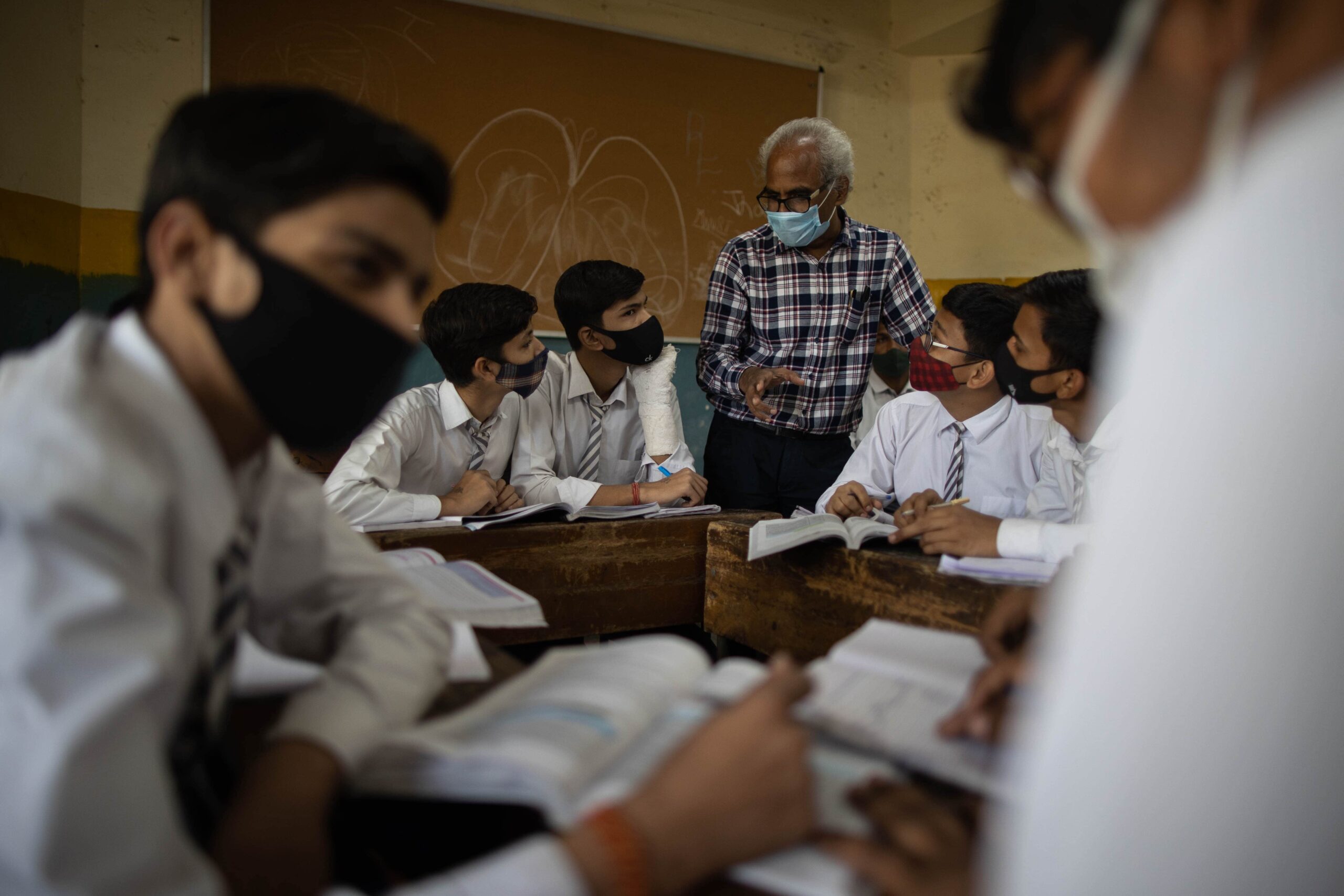Problem:
Substance abuse is a major problem in India, with 1 out of every 5 children in school affected by it. As many as 82.98% street children and 18% school children are under its influence today. Apart from the obvious health repercussions, addiction among children also contributes to poor attendance and high dropouts, leading to longer term problems such as unemployment.
Research shows how truancy precedes substance use, and in South district in Delhi, Mentor Teacher Mr. Rajesh Kumar identified this early sign in his schools. He saw that students were escaping during class hours to indulge in addictive behaviour and gambling. This led to a rapid deterioration in their academic performance and overall school engagement, with only 16% students passing the exams. Mr. Rajesh decided to bring this issue to one of STiR’s teacher network meetings, part of the Delhi government’s Teacher Development Coordinator (TDC) programme, to receive support from his fellow teachers and create a plan to address it.
Solution:
The first approach that Mr. Rajesh took was to rebuild the child-school relationship by establishing positive connections between them. In a recent network meeting, he had learned about strategies to strengthen relationships with students, including one-on-one sessions, community connections and home visits. He also planned additional measures such as encouraging local shopkeepers to keep a check on school children and roaming out of school, which had a positive impact on attendance. Over 2-3 years, Mr. Rajesh saw attendance rise from less than 10% to 75%, and reduced truancy to 0%.
Once the child-school connection was restored, the next step was to retain the child in school. Some of the other strategies introduced in the TDC programme included peer learning processes, discussions around self-reflection, and how to build a culture of appreciation in the classroom to boost their morale. By implementing these strategies, Mr. Rajesh hoped to help teachers to instil a sense of joy, belonging and pride towards the school in neglected and disinterested students. A positive and nurturing approach from teachers, coupled with interactive classroom teaching, helped in retaining students in school and improving both their self-esteem and learning levels. Over the same time period of 2-3 years, the pass percentage increased from 16% to 74%.
“The Mentor Teacher program launched in the year 2017 by the Delhi government has played a significant role in bringing revolutionary changes in Delhi government senior secondary schools. During the network meetings, teachers came together and discussed the challenges faced in class due to low attendance. They shared that irregularity in school disconnects the child with what is learnt in class which then reflects in their behavioural issues, low self-esteem and poor academic performance.” Mr. Rajesh Kumar, DIET Motibagh
Parallel Improvements:
Mr. Rajesh’s story is not an isolated case. His counterpart, Mr. Sanjeev Tayal from North East district, shared similar experiences. He shared how connection strategies shared through the TDC programme had helped teachers to foster connections with students and the community to understand the reasons behind truancy and chronic absenteeism for his mentee schools.
Senior Secondary school teachers from different districts across Delhi shared how teacher network meetings gave them a forum to come together and explore various ways to create a safe and participative learning environment for students which eventually helped to increase the attendance and mitigate the problem of chronic absenteeism and truancy.
This case study highlights how participating in network meetings can become a platform for teachers to collaboratively devise ways to increase attendance and solve other classroom related challenges. It has been observed by various stakeholders that classroom routine and teaching learning strategies discussed during such meetings helped teachers to make classrooms more interactive, safe and engaging. Mr. Rajesh adds, “Engaging with STiR has resulted in significant changes in teaching approaches. For example, teachers who would only engage students in rote learning from the blackboard now encourage them to participate in role plays and other activities. Helping students find classroom content interesting has also resulted in improved attendance.”
“When we formed groups in class and encouraged peer learning, the interest of students in class increased. With the modifications in teaching and learning processes, classrooms became more interactive and child-centric. Teachers made attempts to understand the problems faced by children in class and at home. This helped to create a safe and thriving environment for children which gradually led to an increase in their attendance.” Mr. Sanjeev Tayal, DIET Dilshad Garden
“Schools no longer need walls or gates to keep us in because we want to listen to what our teachers have to say.” says a student from the Delhi Government Senior Secondary schools, South Delhi.


